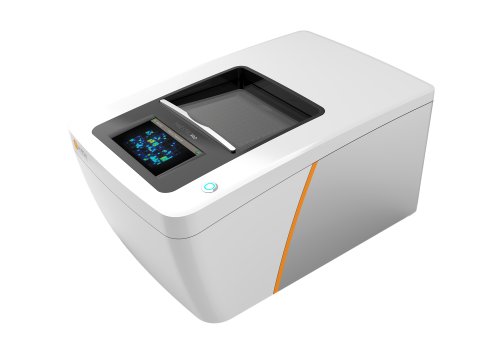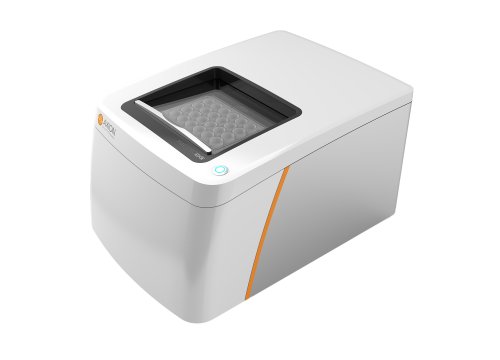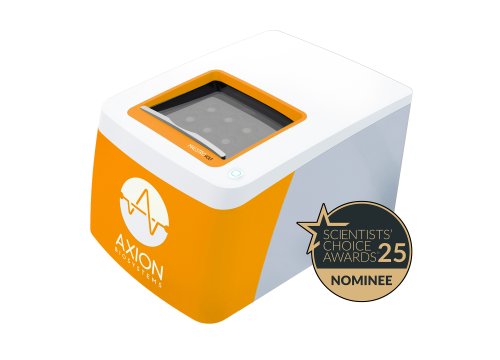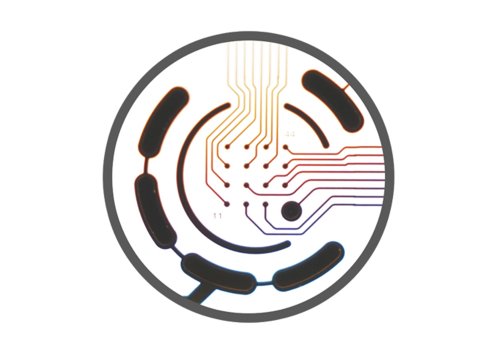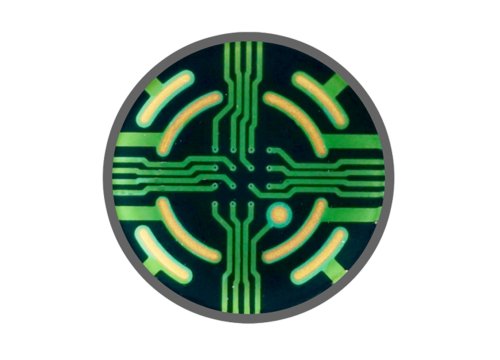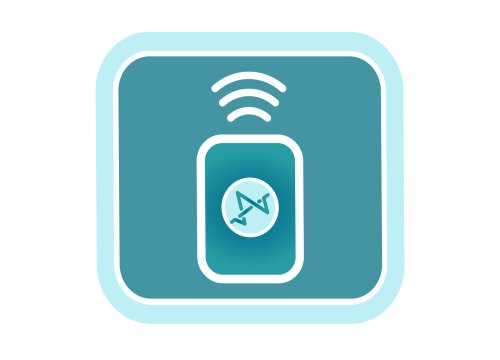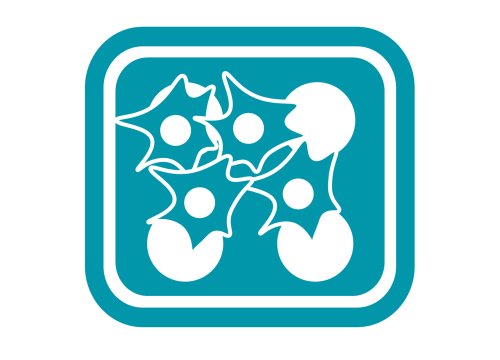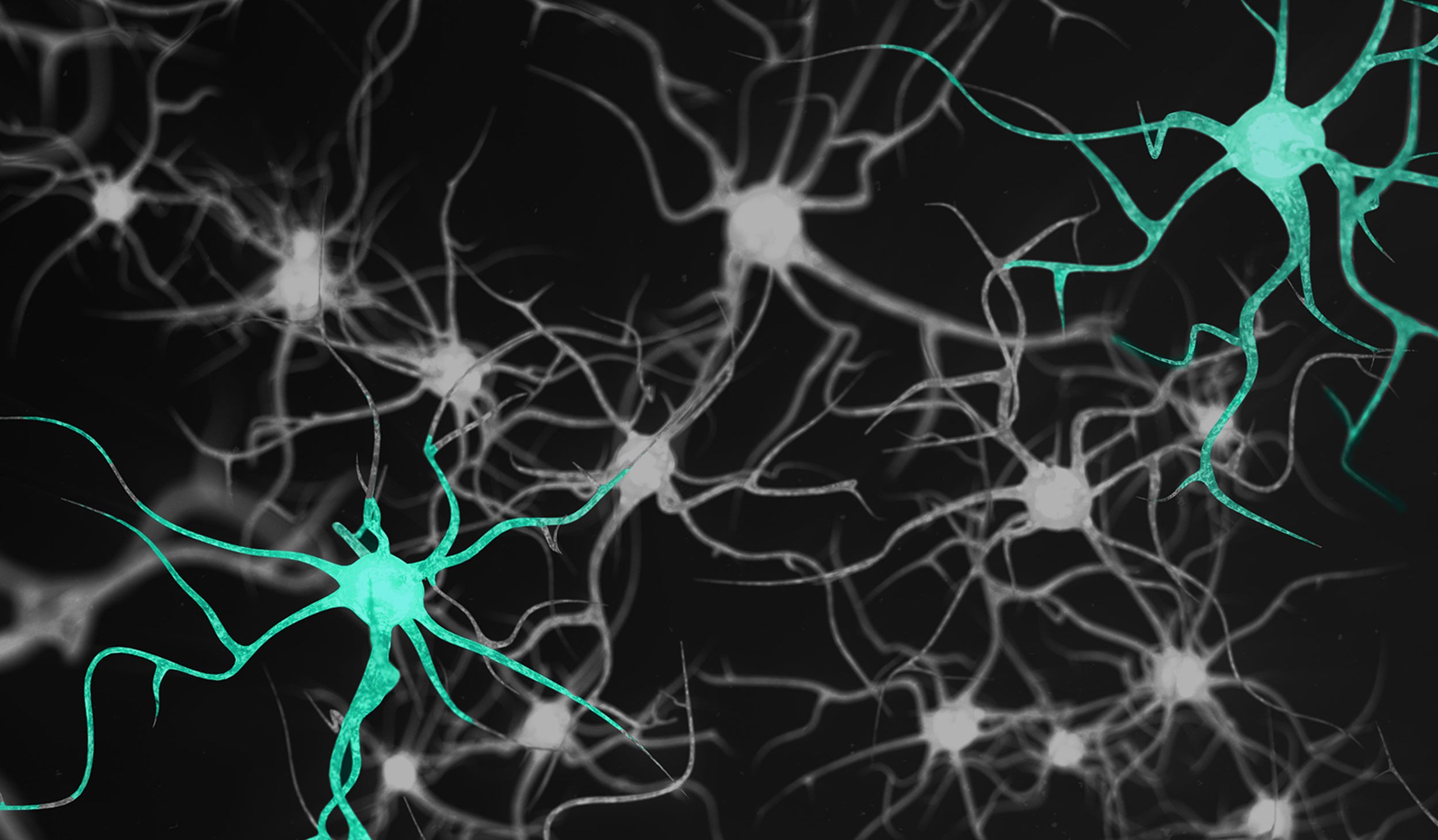
Neurotoxicity occurs when a substance alters neuronal function, leading to seizures, cognitive decline, loss of motor function, or behavioral disturbances. Toxic substances may subtly alter neuron and network function prior to or even in the absence of cell death.
The Maestro MEA system has the sensitivity to measure single neuron firing and the electrode density to capture network level activity. With built-in environmental controls and non-invasive measurements of function and viability, the Maestro is ideal for acute and chronic assessments of compound risk.
Understanding mechanisms of seizures with in vitro models
Studying seizures requires innovative lab tools designed to accurately measure complex neural network function.
The Maestro MEA platform can recreate in vivo phenotypes of seizurogenic activity in vitro, allowing researchers to:
- Evaluate safety and predict risk
- Screen therapeutics and assess functional impacts
- Monitor and evaluate cultures over time and label-free
Discover how Axion’s live-cell analysis tools can streamline the drug development pipeline.
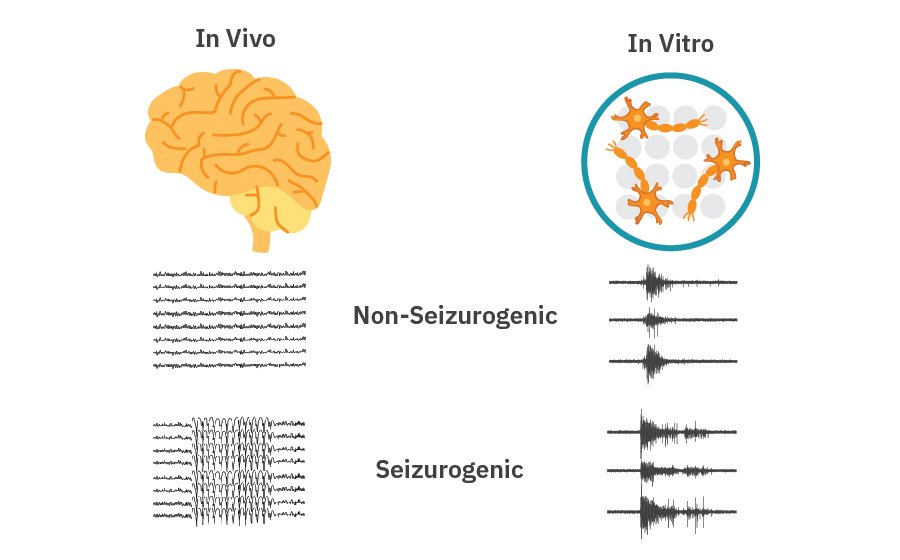
-
AI-based MEA assay assesses drug-induced neurotoxicity and seizure risk in vitro>
-
Measuring seizurogenic/proconvulsant risk>
-
Multiplex cell viability and activity in the same well>
-
Assay Steps>
Purpose: To evaluate seizurogenic potential of compounds. Numerous drugs are associated with adverse side effects, such as seizures and convulsions, advanced, functional assays are needed to predict seizure liability of drugs in vitro.
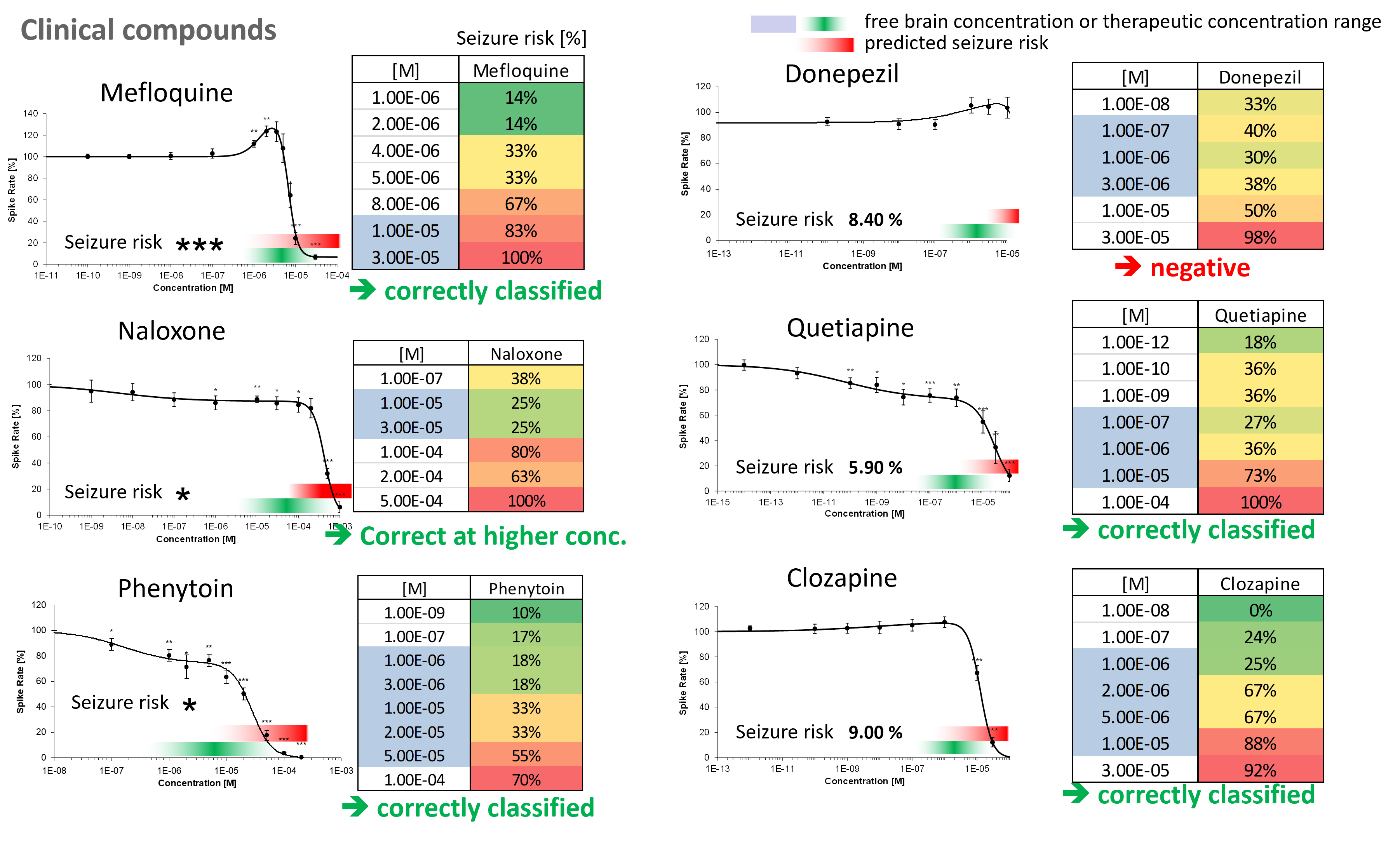
Mouse embryonic brain cells were treated with selected clinical compounds and analyzed via seizure viability prediction assay performed on the Maestro MEA platform. MEA data was analyzed using an artificial intelligence-based protocol.
Result: Compounds were correctly classified using the MEA-based seizure prediction assay. In vitro prediction model also demonstrated correlation with the results of an early clinical trial. [Bader, 2019]
The Maestro Pro and Edge multiwell MEA platforms are an effective laboratory tool for high-throughput in vitro screens of neuroactive compounds (McConnell et al 2012, Valdivia et al 2014). Basic metrics, such as weighted mean firing rate, are sensitive to many neuroactive compounds, while advanced metrics, such as network bursting and synchrony, provide reliable identification of compounds that increase or suppress seizurogenic activity and, more broadly, affords discrimination between various compound classes. In the example below, 16 compounds were dosed sequentially with 6 replicates across 2 plates.
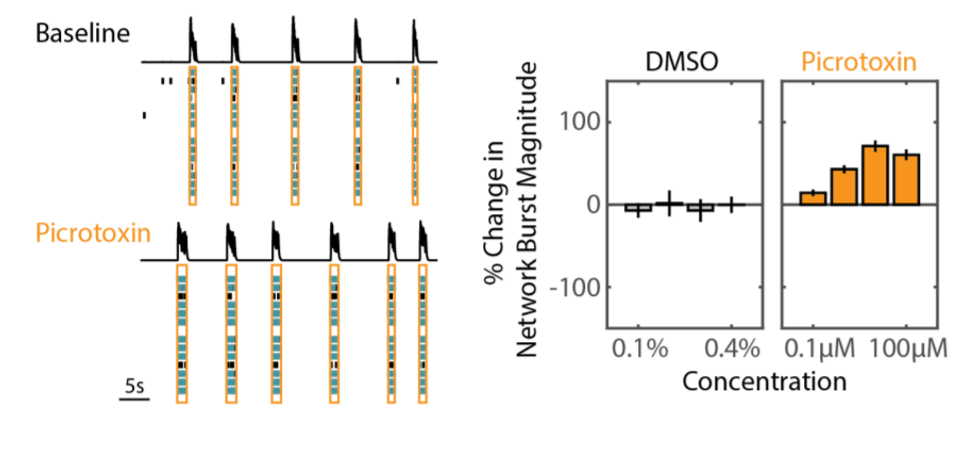
Network burst magnitude (number of spikes per burst) clearly discriminates proconvulsants, like picrotoxin, from the vehicle control.
Synchrony, as measured by the full width at half height of the cross correlogram (FWHH), differentiates proconvulsant compounds from other classes. Proconvulsant compounds exhibit increased synchrony, while antiepileptics exhibit decreased synchrony.
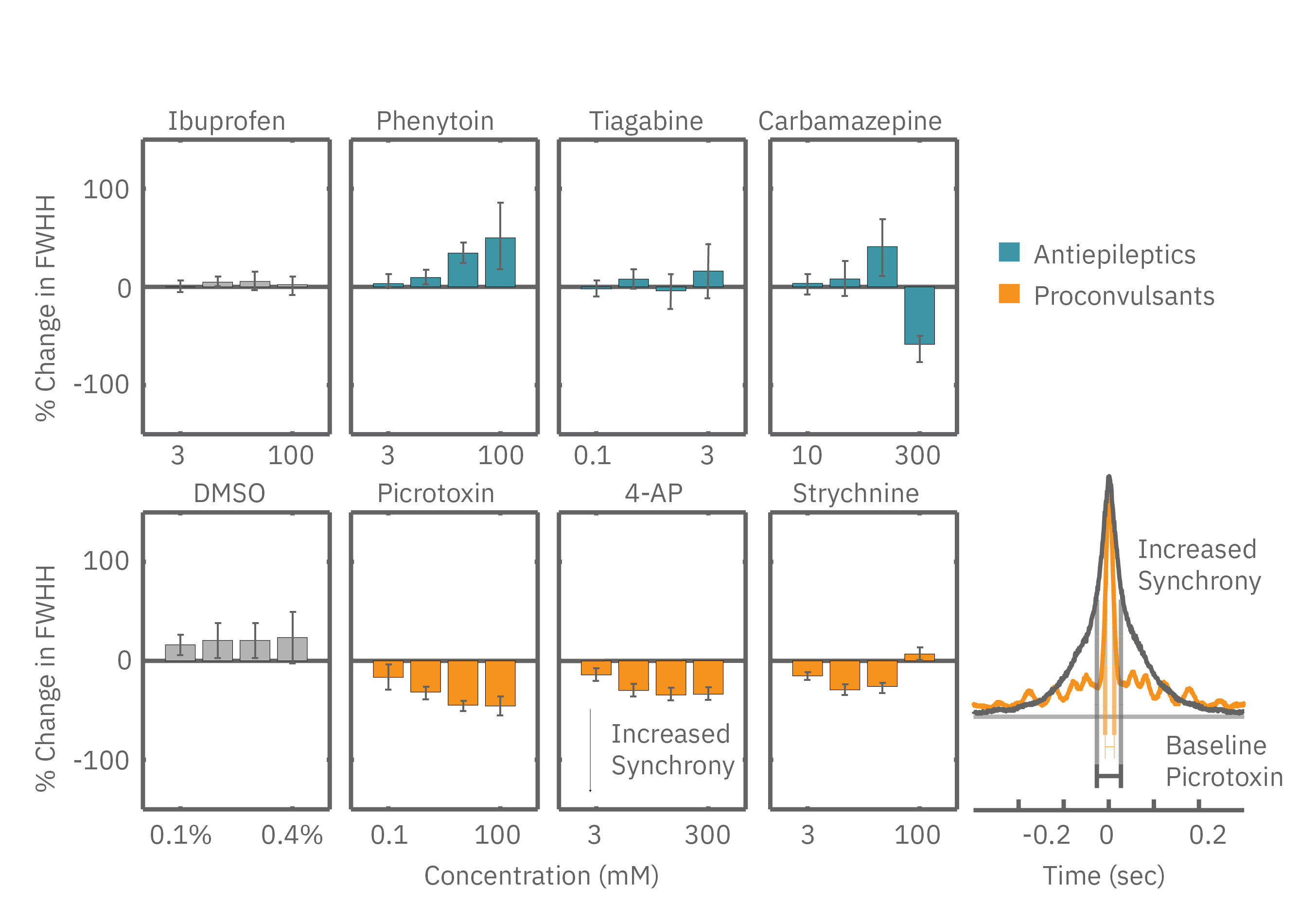
Neuroactive compounds may impact functional activity, cell health, or both. Without measures of cell viability, it is difficult to distinguish functional neurotoxins from cytotoxins. With the Maestro you can assess both functional activity and cell viability on the same microelectrodes.
Learn more about MEA Viability.
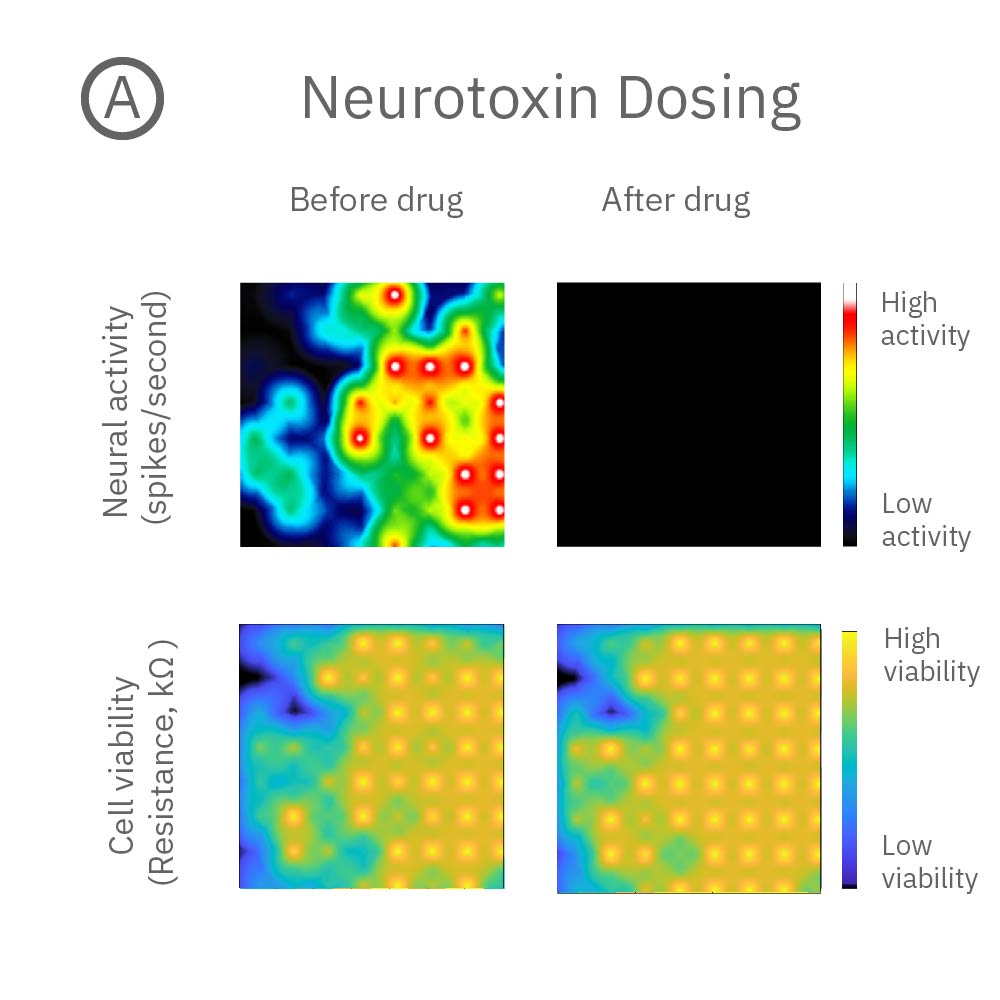
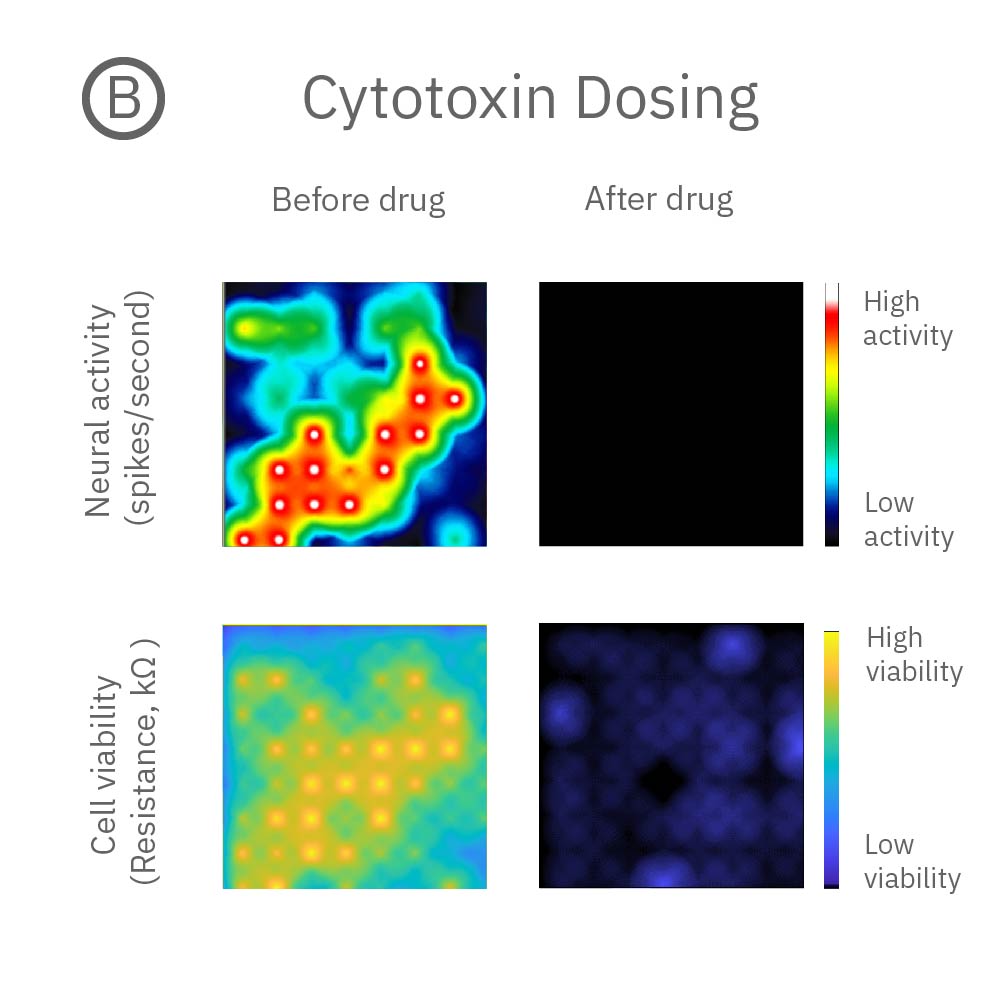
Well A was dosed with a functional neurotoxin that silenced neural activity, but did not impact cell viability. Well B was dosed with a cytotoxin which killed them.
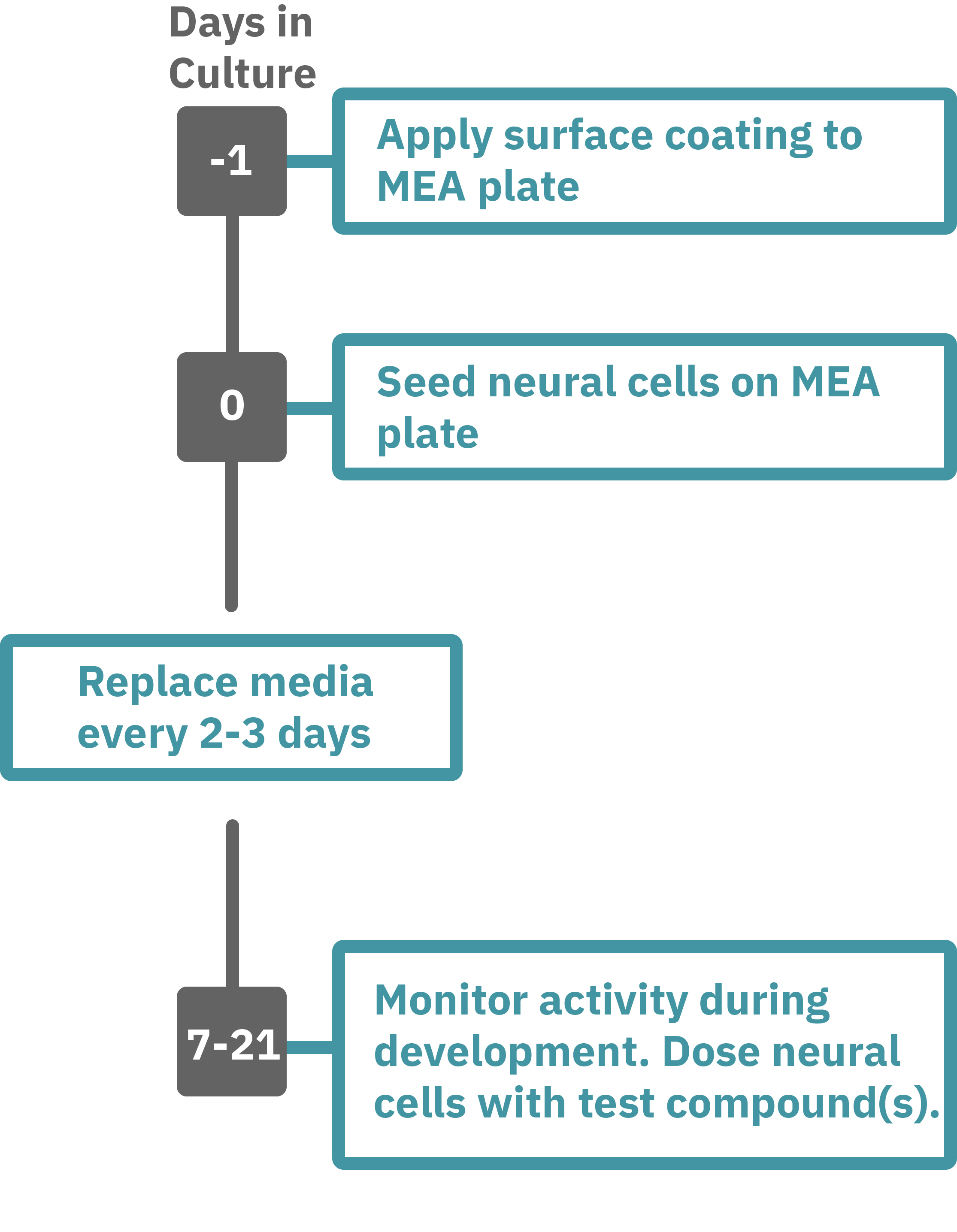
Getting started with Maestro Pro and Edge couldn't be easier. Culture your neurons in an Axion multiwell MEA plate (Day 0). Load the MEA plate into the Maestro MEA system at the desired recording times and begin recording. Analyze the neural activity in the MEA plate label-free and in real-time with AxIS Navigator Neural Module software. Add test compounds as required (e.g. Day 7).
Learn how to add MEA Viability to your protocol

